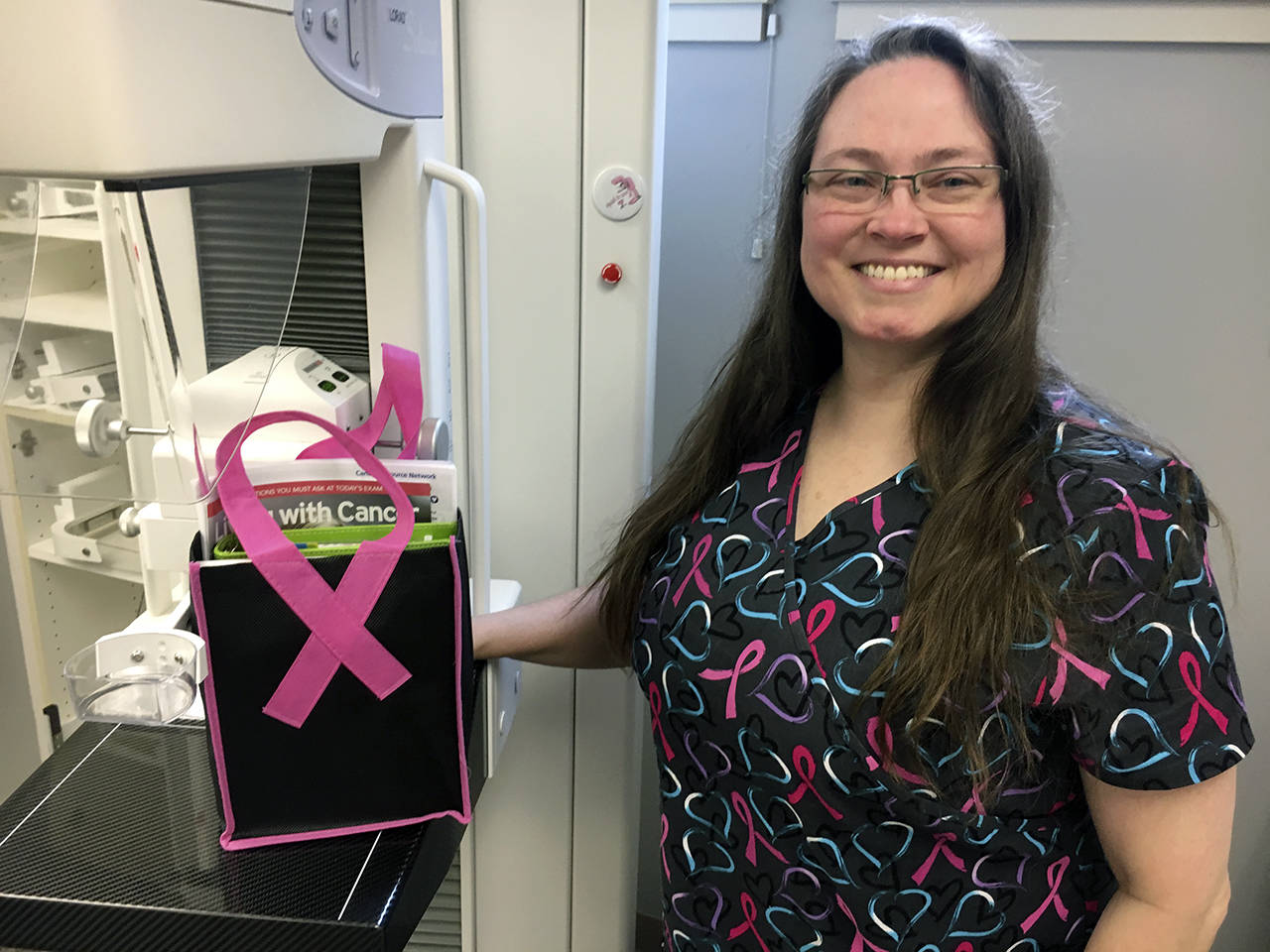Most of us know October is the month when pink ribbons appear everywhere and we think about the people we know who are fighting, or have succumbed to, or have survived breast cancer.
But it doesn’t occur to many of us that we should get ourselves checked.
If you don’t think it could happen to you, think again. The odds are extremely high, and they increase with age. According to statistics provided by the nonprofit Worldwide Breast Cancer, one in 233 American women in their 30s are diagnosed. That goes up to one in 38 for those in their 50s, and a shocking one in eight for those in their 70s.
And you can’t dismiss the thought just because your mom didn’t have it: WBC reports that although family history is a factor, more than 90 percent of those who are diagnosed have no relatives with the disease.
But there’s good news, too: When it’s discovered early, before it has spread, there’s a 99 percent five-year survival rate — a vast improvement from about 80 percent in the 1990s.
These are just a few of the statistics I learned this week talking with Dawn Heckathorn, a radiologic technologist, mammographer and certified patient breast navigator with Grays Harbor Imaging. She not only conducts and reads mammograms, but also guides patients through the difficult process of dealing with positive results.
What frustrates her no end is the lack of knowledge among those who haven’t been diagnosed. No one ever talks about it, she said.
“I don’t know when breast cancer became taboo,” she said. “It’s not like a dirty little secret among women; men get it too.”
Still, she said, the No. 1 contributor to breast cancer is estrogen. Studies have found the chances increase with early onset of menstruation, late menopause, taking birth control pills or using hormone replacement therapy.
There are at least six sets of breast cancer screening guidelines, established by organizations ranging from the American Medical Association to the American Cancer Society. Most agree that 40 is the appropriate age to begin screening, and that mammograms should be done regularly from that point on. Many disagree, however, on what age to stop screening, if at all.
Dawn is a proponent of the guidelines set forth by the National Comprehensive Cancer Network, a not-for-profit alliance of cancer centers across the country, which recommends annual screenings from age 40 on, with the end date to be determined by the patient with her doctor.
But it’s also important to note that breast cancer can strike younger women, too — and, of course, men. So, while regular mammograms might not be appropriate for those people, they should still be aware of the signs of breast cancer so they can get checked if needed.
An excellent source for that information is KnowYourLemons.com, a website operated by the nonprofit Worldwide Breast Cancer. It uses lemons as a visual representation to show people the 12 danger signs. They include not just the lumps you’ve always been told to watch for, but also dimples, growing veins and redness, just to name a few. If a breast shows any of these signs, it’s time to have a doctor take a look.
A non-visual warning sign, of course, is pain. General pain in the breast usually can be attributed to stretched ligaments. (Yes, you can sprain your breast!) Applying ice will often help that, and wearing a properly fitted bra will prevent such issues. But a specific pain — one that persists in a single spot — should be checked out.
No one knows your own body better than you, so it’s up to you to let your doctor know when something is not right, Dawn said. And if your doctor won’t listen, find one who will — quickly, before things progress.
Then she told me one more thing that I didn’t know before I met her: You don’t need a doctor’s order, or referral, or anything like that to have a mammogram done if you have no symptoms. You can schedule your annual check and have the results sent to your doctor.
I scheduled mine on the spot. You should, too, if you haven’t been checked this year.
“As women, we tend to push our own health to the side,” said Dawn. “Quit ignoring yourself. We don’t want anyone to be left behind.”
Kat Bryant is lifestyle editor of The Daily World. She lost her mom earlier this year to metastatic breast cancer, and she has resolved not to put her son through that. Reach her at kbryant@thedailyworld.com or on Facebook at Kat Bryant-DailyWorld.


